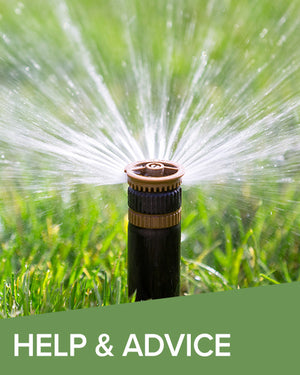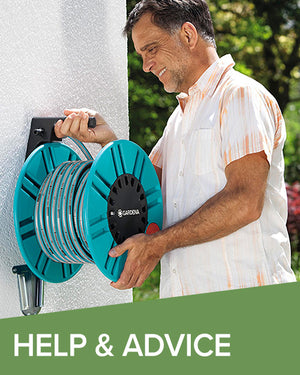Hi unavailable,
Thank you for booking a call with unavailable for a unavailable.
This is scheduled for unavailable.
We will send you a reminder via text message to unavailable 1-hour before the scheduled call.
Before your session, please could you have to hand your water pressure and flow rate, a plan of your garden with dimensions, and decide which areas need to be irrigated. If you are unsure, read the information below for guidance.
Preparing the Required Information for Design
Water Performance
It is important that you accurately measure the performance of the water source so we can accurately calculate how your system will perform during operation.
If you plan to use a pump you can refer to the pump manual which indicates the pressure and the flow available. If in doubt, share the pump manual with your designer during consultation.
If you are planning to run your irrigation system from a mains water source (garden tap or direct connection), follow the instructions below to find the performance.
Calculate the Pressure and the Flow of your Installation
Pressure
(force exerted by water on a given surface)
Expressed in bar, it is measured using a pressure gauge connected to your water source. If you do not have a pressure gauge, you can purchase one here, or by visiting a local retailer that carries plumbing supplies. For an irrigation system to function correctly, you must have at least 1.5 bar of pressure.


Flow
(quantity of water provided during a given time)
Expressed in litres per minute, you can easily measure this with a large bucket. Simply take a bucket (it doesn't matter what size it is, but you need to know the volume to complete the calculation) and then time how long it takes to fill it up. From this exercise you will then be able to follow the formula below to determine the flow rate coming from your water source.
(Volume of container in litres ÷ Time to fill container in seconds) x 60 = Litres per minute
Draw a Map of your Garden
For this, you will need a sheet of paper, a tape measure, a pencil, a ruler, an eraser, a felt tip pen, and to follow the steps listed below.
- Start with locating the house and the property line on the drawing.
- Draw the paths, terraces, sheds, greenhouses and any other features.
- Indicate the location of lawns, borders, flower beds, trees and shrubs.
- Mark the location of the water source.

Measure your garden accurately
- Measure the property boundaries, paths, lawns, flower beds, borders and everything else in your drawing. The more measurements you take, the easier planning is.
- Count the number and locations of pots, containers, hanging baskets etc.
- Note any notable features and obstacles for pipework, garden gates, ponds etc.
Part of this process is to understand how much pipework is required, the fittings needed to navigate that pipework, and how many/what type of outlets are required. Being accurate with your measurements is crucial.
Create a Scale Drawing
After taking all the measurements of your garden, carefully transfer your rough drawing to graph paper. You can download some graph paper here and print it at home (ensure the scale is set to original size). Depending on the size of your garden, use one of the following scales:
- 1 cm square= 0.50 metres (1 :50)
- 1cm square= 1 metre (1:100)
- 1 cm square= 2 metres (1 :200)
Indicate those areas which are to be watered and which are not to be watered.
For larger gardens, you will have to divide the system into several, smaller areas. This could be splitting the front and back gardens, or splitting the right hand side and left hand sides.

By having this information available, we can ensure your irrigation system will be as efficient as possible, delivering precise watering in a manner that is both not wasteful and exactly what your garden needs, meaning you can enjoy it all year round with, whatever the weather.



